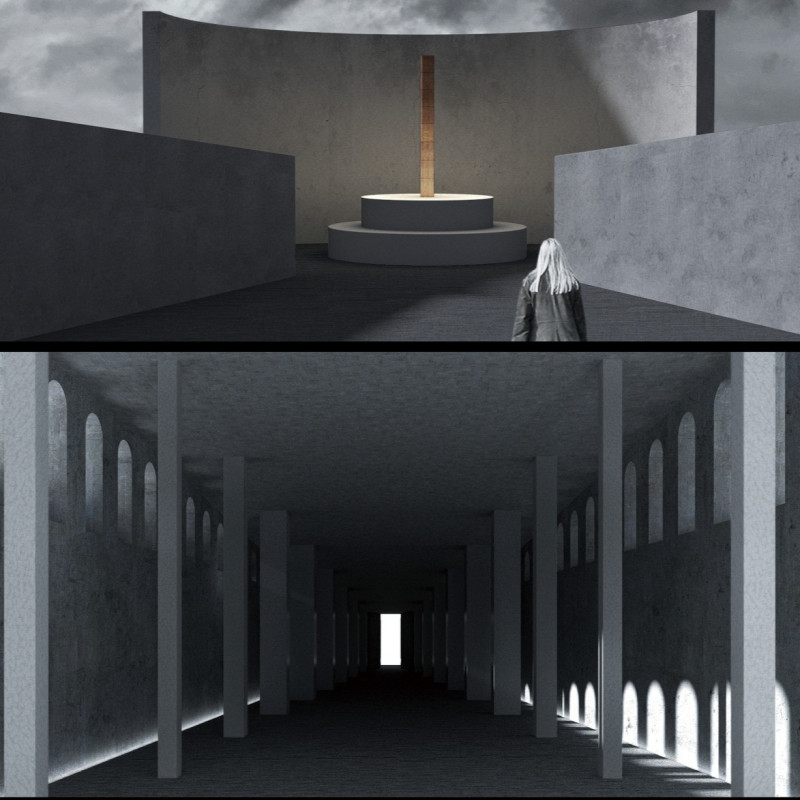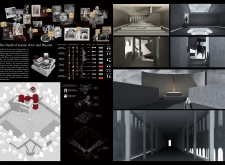5 key facts about this project
The architecture of the project embodies a seamless fusion of form and function. Designed to guide visitors through a series of interconnected spaces, the layout fosters a journey of reflection and understanding. Upon entering, individuals experience a carefully choreographed sequence that gradually immerses them in the historical narrative surrounding Jeanne d'Arc. The entrance is intentionally designed to invoke a sense of anticipation, setting the tone for the contemplative experience that follows.
A significant aspect of this architectural project is its focus on materiality. Concrete serves as the primary structural element, providing a sense of permanence and gravity, which aligns with the somber themes of the narrative. The intentional use of raw concrete not only reflects strength but also symbolizes the weight of the historical injustices faced by individuals like Jeanne d'Arc. Complementing the concrete, wooden accents are integrated into key structural elements, adding warmth and a tactile quality that invites human connection. Glass features are strategically placed to allow natural light to penetrate the interiors, creating an atmosphere that symbolizes enlightenment and hope, reminding visitors of the need for continuous dialogue about truth and justice.
Among the critical components of the design is the chamber of reflection, a space dedicated to introspection. This interior area employs a thoughtful interplay of light and shadow, embodying the project's themes of truth and falsehood. The design encourages visitors to pause and engage with their thoughts, aligning with the project's mission to provoke critical reflection on societal issues. Furthermore, at the center of this space is a monumental representation of Jeanne d'Arc, acting as a focal point of remembrance and honoring her legacy. This heroic monument is deliberately elevated and illuminated, drawing the eye and prompting visitors to consider her significance within the broader context of female representation and historical narratives.
The pathways within this design are intricately planned, leading visitors through various installations and segments of the narrative. These pathways not only enhance the sense of discovery but also mirror the complexities of Jeanne d'Arc's journey, reflecting the myriad challenges faced throughout her life. Open courtyards incorporated into the design serve as welcoming spaces for respite and contemplation, allowing visitors to step away from the heaviness of the narrative while reinforcing the broader concept of freedom and open discourse.
What distinguishes "The Death of Jeanne d'Arc and Beyond" is its commitment to integrating historical context within a modern architectural framework. The design establishes a dialogue between past and present, facilitating an exploration of pressing issues related to gender, injustice, and representation. Through unique material choices, spatial organization, and thoughtful detailing, the project invites a varied interpretation of social themes, making it a pertinent contribution to contemporary architectural dialogue.
As visitors engage with this project, they are encouraged to explore a deeper understanding by reviewing the architectural plans, sections, designs, and ideas that have informed its creation. Each element has been meticulously considered, and the layers of meaning within the architecture present a compelling narrative that beckons further exploration. By diving into the architectural details, one can appreciate the profound intentions behind the design and its ability to inspire thoughtful conversations about the interplay of history and architecture.























